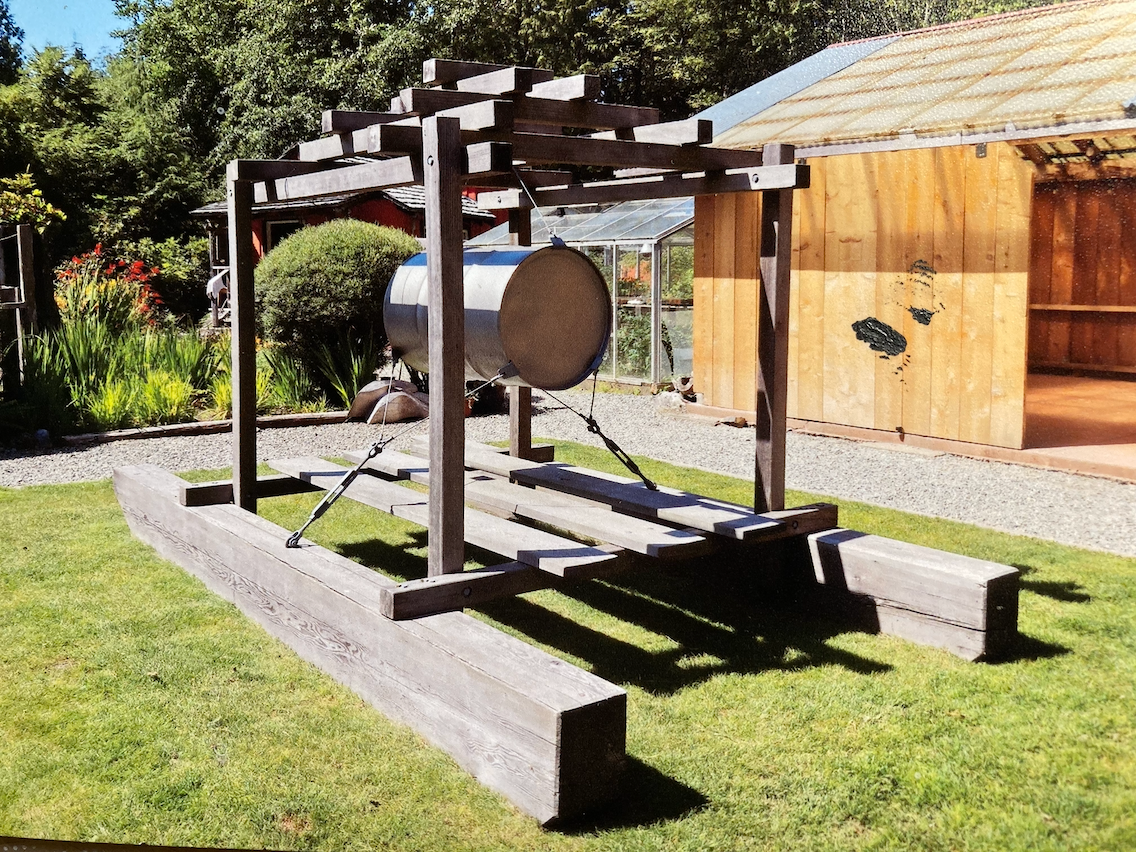Skidder
Douglas fir, steel
7.5' x 7' x 13'
1980
In the late 19th and early 20th century, in the forests of the Pacific Northwest, the logging industry developed powerful steam-driven engines attached to massive winches for moving timber out of the woods. These ‘donkeys’ were mounted on rough timber beds called ‘skidders’, so-called because they could be dragged through the woods to a work site, by running a cable out from the machine to a big tree, and using the winch to draw the skidder forward. Once the skidder was set up on site, lines would be rigged from the donkey to pulleys at the top of a spar tree, then out into the cut, to drag felled timber back to the landing for loading.
The world oil crisis of 1973 afforded North American consumers an opportunity to reflect on their petroleum dependency; the 1979 film Mad Max pursued a paranoiacal and apocalyptic meditation on a gasoline-obsessed post-petroleum future. The current global heating crisis is a direct result of the petroleum industry's refusal, since the 1970s, to take responsibility for or act on its massive contribution to unregulated carbon emissions, which have led us directly to the present planetary existential crisis.


The standard “barrel of oil” metric used in the oil industry appears here as a single 45-gallon stainless steel drum, offering a meditation on "the last barrel of oil."
Skidder conflates images from two high-return and steadily diminishing resource-extraction industries. Recalling an age of steam-powered logging, Skidder is a reflection on the era's brutal physical labour sliding ahead to a petroleum-free future, enfolded in a fetishistic reverence for sanctified oil.
The inert and static character of the work’s fixed structure is animated through the slow vibrant quiver of the suspended barrel of volatile liquid held in dynamic tension.
